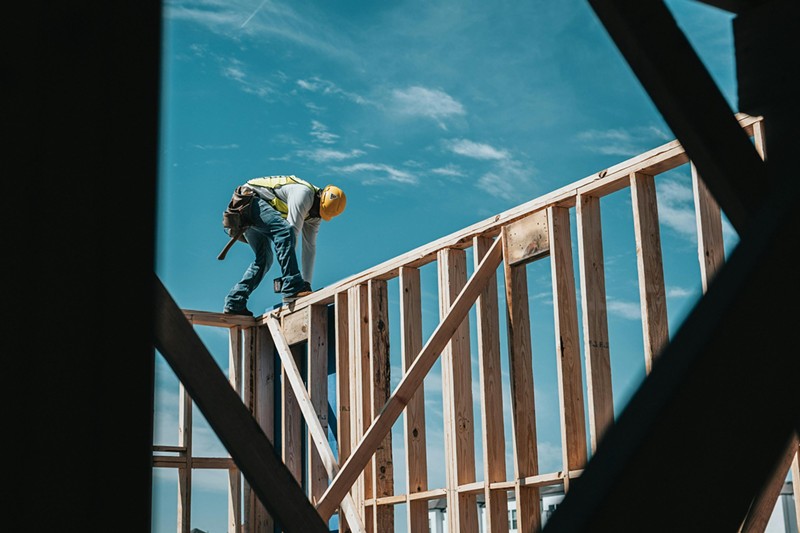Just over a year ago, longtime mail carrier Eugene Gates Jr. collapsed while walking along his delivery route in Lakewood. Gates was taken to a local hospital where he was declared dead, and an autopsy found heat stroke to be a factor.
The heat index at the time of his collapse topped 115 degrees.
The CDC estimates over 1,200 people are killed by extreme heat in the U.S. each year, but only five states — California, Colorado, Minnesota, Washington and Oregon — have laws on the books regulating heat protection standards. It’s a reason legislators and advocates for workers' rights have voiced support for a federally proposed bill that would require workers to have access to shade, water and breaks while working in hot weather.
“I have been calling for [action] since last summer to protect my constituents and workers across Texas and the nation by requiring employers take action to protect their workers from deadly heat," North Texas Congresswoman Jasmine Crockett said in a statement provided to the Observer. “I have and will continue to relentlessly pursue accountability for the death of Eugene Gates with the United States Postal Service. I am proud to have fought to secure this victory.”
The new regulations proposed by the Occupational Safety and Health Administration (OSHA) implement safeguards for workers once the heat index reaches 80 degrees, and a second set of procedures is triggered at 90 degrees. OSHA’s recommendations would require employers to provide workers with water and break areas and would draft work plans to “acclimate” employees’ bodies to the heat gradually. After the 90 degree mark, 15-minute breaks would be required every two hours.
It could be a few years before the rules, which are currently open for a period for comment, are put into effect, and threats like potential litigation or a change in presidential administrations could muddy the path forward. Some safety experts say half the battle of fighting the heat is educating workers about the symptoms of heat-related illnesses, and the proposed rule has fueled the national conversation surrounding the need for regulation.
The Impact on a Major Texas Industry
Nearly 700,000 Texans are employed in the construction industry, the Associated General Contractors of America estimates. Gradlin Franks, director of safety for Dallas-based construction and architecture firm The Beck Group, said the company begins training sessions about the symptoms of heat-related illnesses and the importance of hydration several months before summer starts.
“In the North Texas area, most general contractors are familiar [with extreme heat procedures.] Everyone wants to make sure that they send their employees home at the end of the day,” Franks told the Observer. “I think the nice thing about the OSHA proposal is it gives some parameters around [heat protection.]”
Currently, The Beck Group begins implementing procedures such as cooldown stations, shaded worksites and break areas when the heat index hits 90 degrees. After the temperature tops 100 degrees, they distribute electrolyte-filled popsicles through job sites and discourage energy drinks, which can increase the risk of dehydration.
In peak summer, concrete pours, which typically take place in unshaded areas, are scheduled for the middle of the night, Franks said.
On the national level, the construction industry is pushing back against the drafted regulations. A letter to OSHA drafted by the Construction Industry Safety Coalition requested the agency write a separate rule for the construction industry, which the organization contends is “too distinct” from other primarily outdoor industries. But Todd Holtz, vice president of operations for TEXO, the largest commercial contractors association in Texas, believes the construction industry in North Texas is already implementing what OSHA outlined, plus some. Most construction companies are using existing OSHA guidelines as a “minimum practice,” he said.
“This heat-related issue and this proposal is certainly important, and if it does get passed I think it will have a positive impact on workers who are not currently protected,” Holtz told the Observer. “The problem that OSHA has is they don’t have enough manpower. They can propose all these rules they want to, but in order to enforce it, they need boots on the ground.”
Holtz said current staffing levels in OSHA’s enforcement department mean the agency responds reactively to problems or injuries rather than proactively to check on job sites to see how standards are being maintained.
The Death of Dallas Water Breaks
For years, a City of Dallas ordinance required employers provide water breaks for outdoor workers every four hours, but a law passed by the Texas legislature last year known as the “Death Star bill” threw out that practice and declared that cities are not allowed to create their own standards for work sites or workers rights.
The Death Star bill leaves workers protections firmly in the hands of the employer, showing, for some, the need for federal protections.
After Gates’ death, OSHA fined the U.S. Postal Service over $15,000 for not protecting workers from the heat. Gates’ wife, Carla Gates, told reporters the fine was a “slap in the face.”
USPS has since implemented the Heat Illness Prevention Program (HIPP), which runs from April 1 to Oct. 31 and is designed to educate employees on how to stay safe during hot weather. Aside from pointing out symptoms of heat-related illness and encouraging workers to hydrate appropriately, the USPS advises calling 911 at the onset of any symptoms. Kimetra Lewis with the National Association of Letter Carriers told reporters with CBS News she feels the organization has done little to implement systemic change following Gates’ death.
"Safety should always come first. And I just feel like the Postal Service hadn't put a priority to it," Lewis said. "And I'm worried and concerned that the same things that occurred last year will reoccur this year."













